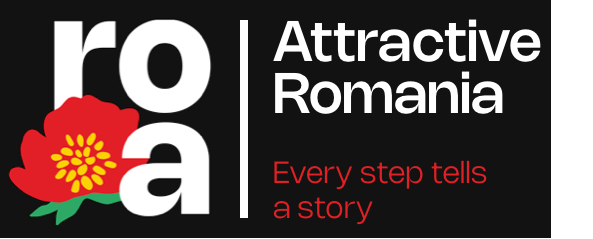The castrum of Războieni-Cetate is a fortification dating from the early Roman era (2nd-3rd centuries AD). He belonged to Alei I Batavorum, a cavalry troop brought to Dacia by Emperor Hadrian, after the reorganization of the province, probably around 136 AD.
Geographically, the fortification was located about 50 km north of Apulum (Alba Iulia), where the 13th Gemina legion camp was and 2 km from the salt pans at Ocna Mureș, thus having both a strategic position and the possibility to supervise and regulate the transport of salt on Mureș.
Currently, the castrum is visible in aerial photographs taken especially in autumn, after the agricultural land has been ploughed. Its interior has an area of about 5.2 ha.
The dimensions are large in relation to those of an ordinary castrum, because the troop stationed here was the miliaria (it had approx. 1000 soldiers). In addition, the horse stables were also located within the fortification. At Războieni-Cetate, as in other camps with cavalry troops in the garrison, the horses were housed together with the soldiers, in the rooms in front of their bedrooms.
Brief historical foray
The Batavi were a Germanic tribe, originally from the area of the Low Countries. During the time of the Julio-Claudian emperors, the Batavians stood out as some of Rome's most valuable auxiliary soldiers.
A public inscription erected on the bank of the Danube records a spectacular fact, which happened in the year 118, during the reign of Emperor Hadrian. A soldier from a band of Batavi, named Soranus, swims across the Danube in front of the emperor in full gear. During the crossing, he splits an arrow in flight with his arrow.
Architectural features
The castrum from Războieni-Cetate has a rectangular shape. Today, its surface is mostly arable land, a significant part being occupied by contemporary buildings and their yards.
The buildings identified in the castrum are the headquarters of the command (principia), the commander's residence (praetorium), the barracks and the grain store (horreum).
To the west of the castrum was the civil settlement (vicus). The most impressive building in the vicus has dimensions of approx. 23 x 20 m, being composed of several rooms. It represents the main object of archaeological research in recent years.
Unique experiences
If you are in Ocna Mureș, choose to spend a few days at the "Băile Sărate" treatment and leisure complex, recently inaugurated. Here you will find indoor and outdoor pools, with salt water and fresh water, a fitness area and spaces for medical recovery.
If you are interested in the history of the place, we recommend you visit the ruins of Teleki castle, certified since 1290 as Novum Castrum. The castle is located in the Uioara de Sus district, at the highest point of the town. In the vicinity you will also find the ruins of the Romanesque church, which was dated around 1300.
3D Animation
Virtual tour
Facilities
Parking
In proximity
Sanitary group in the location or proximity
No
Wi-Fi
No
Access facilities for disabled people
No
Status
Temporarily closed
Landmark access
Bicycle, Railroad, Walking, By car
The custodians reserve the right to modify the visiting conditions of the attractions.
Reviews

-5.jpg?locale=en)









 Continue with Google
Continue with Google
